Rákóczi Road was already very busy in 1936, with pedestrians, vehicles, including crowded trams, when the corners of the four-storey house on the corner of Rákóczi Road and Berzsenyi Street simply collapsed. The disaster had two dead and 9 injured. Presumably, the lives of many were saved by the traffic police officer and an accompanying engineer who saw the wall of the house suddenly crack, and warned passers-by. According to the report of the Pesti Napló of 24 July 1936, this happened:
“On the corner of Berzsenyi Street, traffic was controlled by police officer Imre Benke. Maybe three or four minutes might have been missing from three o'clock when the ship engineer and the police officer noticed strange things. The plaster of the house at 73 Rákóczi Road began to crumble, and a few seconds later bricks began to fall from the first floor onto the Rákóczi Road roadway. The policeman immediately rushed over, and so did the ship engineer and they sent away the passers-by. The house collapses. About thirty people were diverted from near the house when the disaster occurred. The side of the Rákóczi Road front facing Berzsenyi Street collapsed in one second, from the attic to the top of the street shops. ”
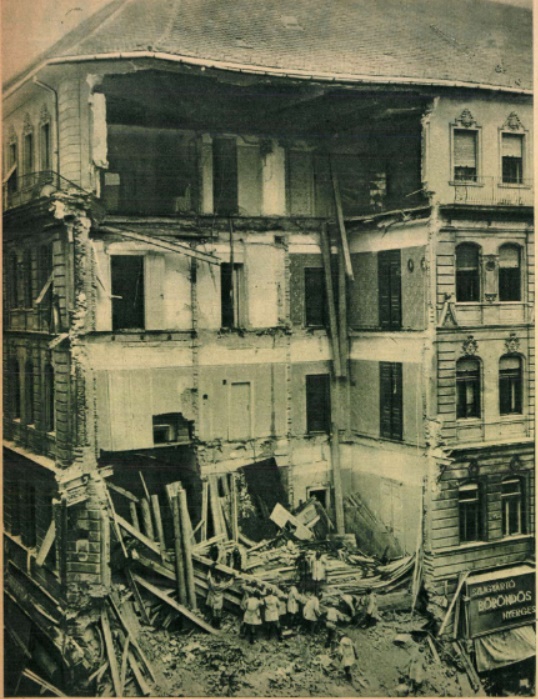
The collapsed house (Képes Pesti Hirlap 24 July 1936)
There were signs of the disaster, and residents had been corresponding with the owner of the building, Magyar Általános Ingatlanbank Részvénytársaság, for weeks. They kept signaling that the walls were cracking, that they were scared, and did not feel safe. The bank’s management has sent out experts who have determined that there is no danger and that will take the necessary action when needed.
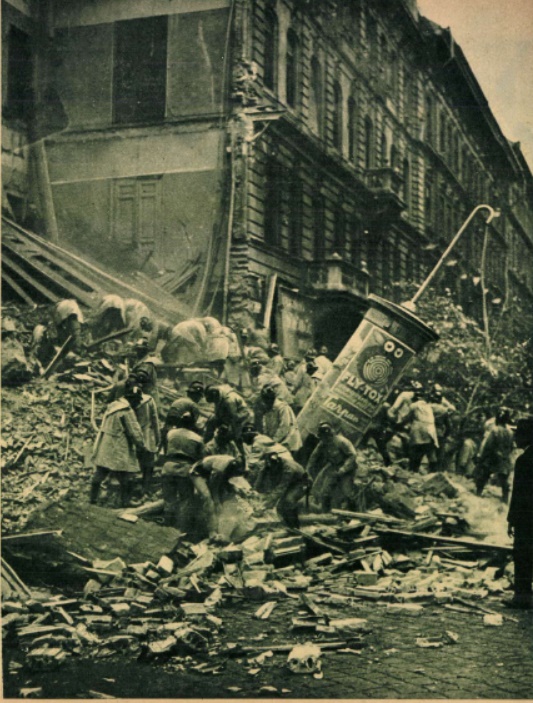
The pile of rubble on Rákóczi Road after the disaster (Képes Pesti Hirlap 24 July 1936)
According to experts sent out by the bank in early July, the cracks were caused by a newly constructed balcony, which was then shored up. However, tenants were prohibited from making other reinforcements at their own expense.
The bank's reluctance was also compounded by the fact that there was a dispute with the stores over the rent and they did not want to start major work until the dispute was settled with the tenants on the lower level of the house.
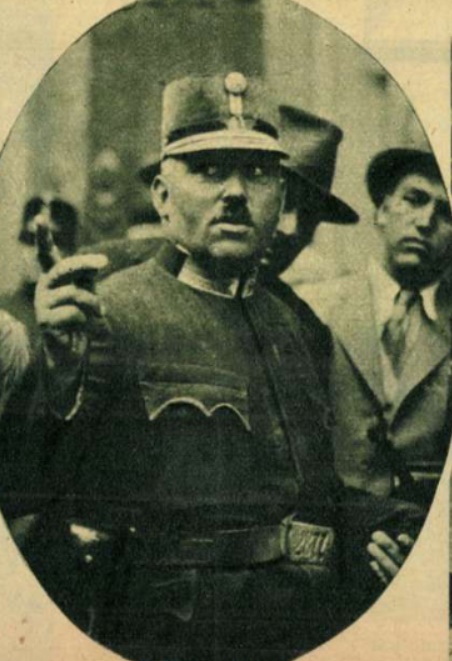
The police sergeant who saved many (Képes Pesti Hirlap 24 July 1936)
However, residents were cautious, many left the building, and only a few worked in the shops - these are some of the reasons why the collapsed house did not claim dozens of casualties. The scale of the disaster was not small, as the corner rooms of the four-story house collapsed and a lot of debris fell onto Rákóczi Road, blocking one of the busiest routes in the city. Not only was traffic impossible, but a gas pipe was broken and a strong smell of gas spread. Fortunately, this did not cause another problem, the gas plants shut down the pipeline in time. An eyewitness, Ernő Győri, a dentist living opposite, said this in the 24 July 1936 issue of Kis Ujság:
“My maid was on the balcony when the disaster started. She was screaming, so I ran out onto the balcony and saw that under the second-floor balcony of House 73, the bricks were flying down the street and the building was suddenly cracking down, as if it had been struck by lightning. In the next seconds, the third and fourth floors collapsed. ”
Plenty of people took part in the rescue, not only ambulances, police and army sappers, but also civilians, and many came to stare, the newspapers estimated the crowd at five to ten thousand people, as they wrote, the Rákóczi Road was "blackened" [by the crowd] behind the police cordon. However, not only well-meaning citizens gathered here, but - as it was an inhabited building - many visited the ruins with the aim of stealing what they could. Police singled out quite a few thieves from the crowd.
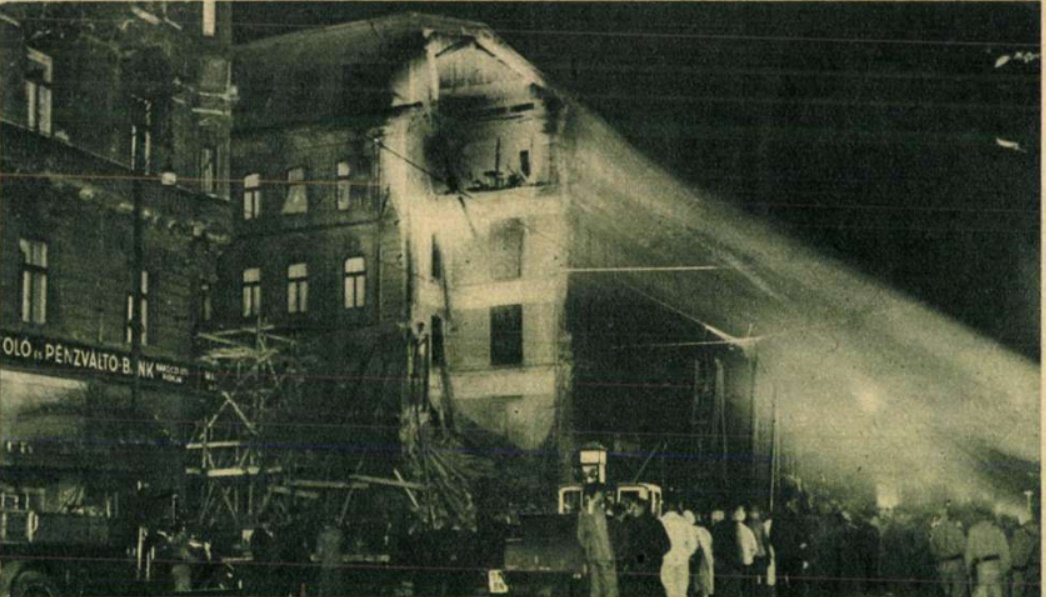
The rescue in the night spotlight (Képes Pesti Hirlap 24 July 1936)
As with any disaster, there was not only one cause for the misfortune here. The house, built in the 1890s, was expanded a few years earlier, in 1927, and was raised by one floor. This was still endured by the structure, it would not have caused much trouble. There was also a small fire in the house, which weakened the support system, but even that didn’t cause any major trouble. The larger dwellings in the house were detached and the new partition walls increased the weight on the slabs. The house was already weaker than it should have been, because the slab of the upper level was not made of reinforced concrete as planned, but of a cheaper material, wood. As noted by the bank’s experts, the newly designed balconies also weakened the retaining walls, and major alterations were made to the shop at the bottom of the building in the meantime, which also contributed to this. The support pillar was carved out for the sake of a larger shop window, they also modified the walls, and the thinned support elements thus ultimately could not withstand the weight of the house above it, a combination of these and the delay of the owners led to the disaster.
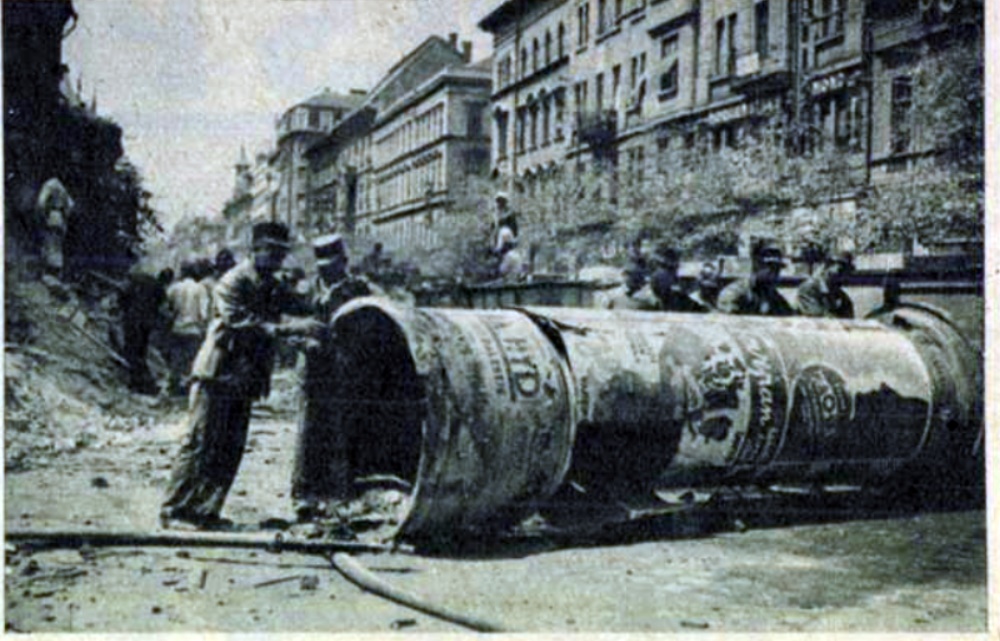
Removal of the overturned advertising column (Képes Pesti Hirlap 24 July 1936)
The investigation began immediately, and two senior bank employees were arrested for a short time, but were soon released. The lawsuit finally ended only in 1940 and only one engineer, Béla Enyedi, who had been sent to the site by the bank before the tragedy, was convicted, he received only 6 weeks in prison and a fine of 1,000 pengő for failing to inspect properly. Bank officials, irregular builders, were not convicted.
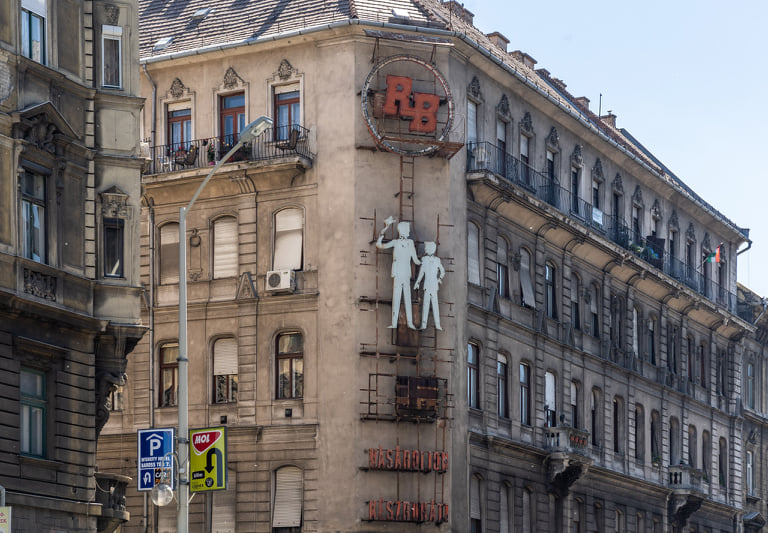
73 Rákóczi Road today, on the site of the detached part of the building, with a sloping, windowless wall, on that, a huge advertisement (Photo: Balázs Both / PestBuda.hu)
The building still stands today, but the collapsed part was not rebuilt, a sloping, solid, windowless wall was built in its place, which faces Rákóczi Road today.
Cover Photo: The house collapse (Friss Ujság 24 July 1936)

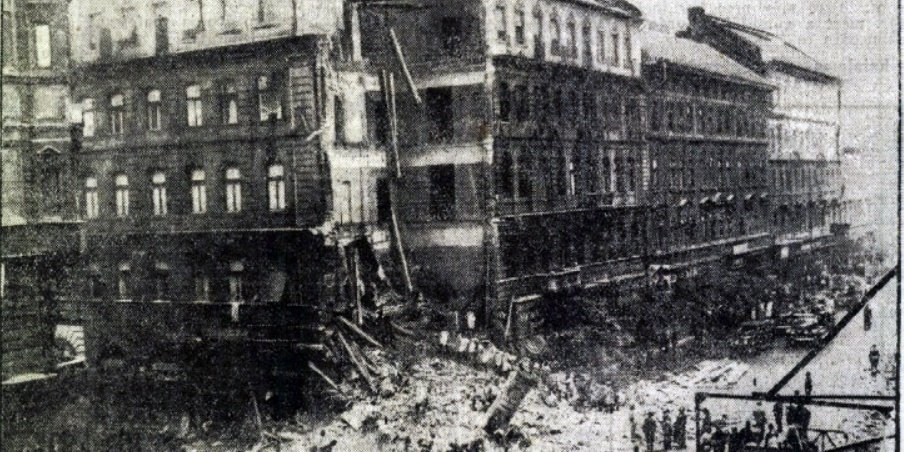


































Hozzászólások
Log in or register to comment!
Login Registration